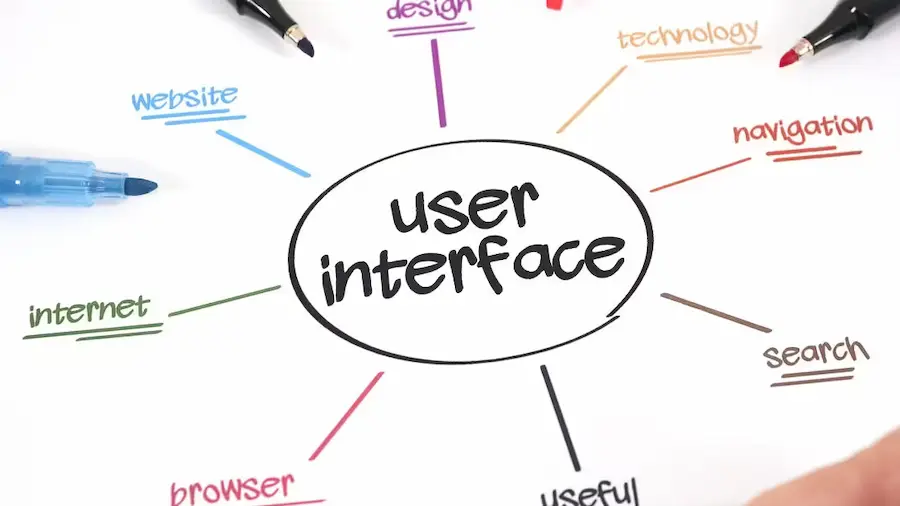
Elevate Your Digital Presence
Ready to transform your content strategy? Our expert team delivers SEO-optimized blogs and powerful backlink strategies that drive real results.
Boost Your Content Strategy →If there’s one shift that has completely changed how SaaS companies grow in the last few years, it’s the rise of product-led growth (PLG). Buyers don’t just want glossy blog posts or another gated ebook. They want to see how your SaaS product actually solves their problem. That’s where product-led content (PLC) comes in.
In this post, we’ll break down what product-led content marketing is, why it’s become the primary driver of growth for successful SaaS brands in 2025, and show you mini case studies of companies actually doing it well. If you’re building a B2B SaaS content strategy, this is one playbook you’re going to want to steal.
Traditional SaaS Content Marketing vs. Product-Led Content
For years, SaaS content marketing meant writing thought leadership pieces, listicles, or generic best practices blogs. Example: “10 tips for better team collaboration.”
Did these rank on Google? Sure. Did they generate leads? Sometimes.
But here’s the thing: They rarely connected the value of the content to the features of the product itself. A reader might nod along, but never actually log in and try the product.
Now compare that with product-led content. Instead of just telling people how to collaborate better, it shows them exactly how to do it inside the product. Screenshots, GIFs, walkthroughs, feature breakdowns. The “aha moment” happens while they’re still consuming your content. That’s the difference.
What Product-Led Content Looks Like in SaaS
Here’s the formula most successful SaaS companies use:
- Start with a real user problem.
- Show how to solve it with practical steps.
- Demonstrate exactly how your SaaS product makes that easier, faster, or smarter.
- Include sample use cases so readers can picture themselves using it.
The focus isn’t just on traffic anymore. It’s on product usage, adoption, and experience. Every content piece becomes a marketing and onboarding tool rolled into one.
| Aspect | Traditional SaaS Content Marketing | Product-Led Content Marketing |
|---|---|---|
| Content Focus | Generic industry topics, thought leadership | Product use cases, feature walkthroughs, real demos |
| Main Goal | Drive traffic and leads | Drive product adoption and conversion |
| User Engagement | Passive reading, mostly informational | Interactive, hands-on learning with the product |
| Content Types | Blogs, ebooks, whitepapers | Tutorials, product walkthroughs, user-generated content |
| Metrics Measured | Page views, downloads, MQLs | Product activation, trial signups, feature usage |
| Buyer Journey Focus | Top and middle funnel content | Full funnel: awareness to activation |
| Role of Product | Mentioned, sometimes secondary | Central to every piece, content doubles as onboarding |
| Conversion Impact | Indirect, via sales team | Direct, often self-serve or assisted trial conversion |
| Long-term Value | Content ages, risk of becoming obsolete | Evergreen product knowledge, continuous engagement |

Mini Case Studies: SaaS Companies Winning with Product-Led Content
To make this real, let’s walk through how some well-known (and anonymized) brands are using product-led content strategies in 2025.
- Slack – Enabling Seamless Team Collaboration through Product-Led Growth
The Challenge: Slack faced a highly competitive market in workplace communication with many established players. Their main challenge was cutting through the noise and convincing teams to switch from entrenched tools. Although awareness was growing, trial-to-paid conversions relied heavily on user experience rather than traditional marketing.
The Product-Led Content Shift: Slack focused on delivering immediate value through its product by offering a freemium model with core collaboration features accessible without commitment. Their content shifted from generic messaging to detailed user guides like “How to Set Up Your First Slack Workspace” and case studies showing real teams gaining productivity. They embedded screenshots and workflows that showed how Slack solved common communication bottlenecks.
Results: This strategy drove explosive organic adoption with a 30%+ lift in new workspace creations attributed directly to product-led content. Users who engaged with educational guides were more likely to convert to paid plans and become long-term active users because they experienced Slack’s value upfront.
- Airtable – Making Collaboration Intuitive with Product-Led Onboarding
The Challenge: Airtable’s unique hybrid spreadsheet-database SaaS needed an adoption model that could educate and convert new teams fast without heavy sales intervention. Prospective users needed to see how Airtable fit their workflows before committing.
The Product-Led Content Shift: Airtable changed their content approach to create step-by-step onboarding tutorials such as “How to Build Your First Project Tracker Using Airtable.” These guides highlighted common user problems and showed how Airtable’s flexibility solved them with visual walkthroughs and template demos. They encouraged users to invite collaborators early during onboarding to boost engagement.
Results: Airtable saw a 25% boost in trial activations and a significant increase in multi-seat adoption. Product-led onboarding content helped users derive product value faster, improving retention and driving expansion within organizations.
- Userpilot – Driving Growth through Educational Product-Led Content
The Challenge: Userpilot, a SaaS platform for user onboarding and experience, struggled with generic content that failed to convert visitors into qualified trials. Their audience needed tangible insights on how Userpilot could solve specific onboarding challenges.
The Product-Led Content Shift: They revamped their content marketing to focus on detailed case studies and “How-to” product guides such as “Boost Your User Activation with Userpilot’s Feature Adoption Flows.” These posts included real screenshots, interactive demos, and customer success stories demonstrating outcomes. The content doubled as both education and product showcase.
Results: Userpilot experienced a 40% increase in trial signups attributed to product-focused educational content. Content readers were more engaged and converted at twice the rate of visitors consuming traditional blog posts, helping the company scale efficiently.
Why This Works: Metrics That Matter
Let’s be real: the old success metric in SaaS content was traffic or maybe MQLs. In 2025, PLG SaaS brands are optimizing for:
- Product adoption rate – How many readers actually start with your product?
- Activation metric – Are they experiencing that “aha” moment inside the product?
- Conversion rate – How much faster do users move from free trial to paid?
- Retention metric – Do content-fed users stick longer because they already “get it”?
- Expansion revenue – Are they aware of secondary features from the content?
Content isn’t just filling the funnel—it’s directly improving product experience and SaaS growth.
Search Behavior Today: Why SaaS Needs Product-Led Content
Here’s why this trend feels unstoppable:
- Buyers don’t want gated PDFs. They want to experience your product at their own pace, sometimes even without talking to sales.
- AI search assistants like ChatGPT, Perplexity, and Claude are summarizing content for buyers. If your posts don’t connect search intent directly to how your product solves the problem, someone else’s will.
- In 2025, more SaaS buyers start with product-led discovery—trialing 2–3 tools side by side—than traditional B2B demo calls.
This makes a strong product-led content strategy not optional, but essential.

A Framework for Building Product-Led Content in SaaS
If you’re wondering how to apply this, here’s a step-by-step checklist you can use:
1. Choose the Right Topics
- Don’t just create content around trends.
- Focus on use cases, user problems, and product workflows.
2. Show, Don’t Just Tell
- Include screenshots, GIFs, or embedded product demos.
- Every content piece must show how your SaaS product solves the problem.
3. Map Content to the Funnel
- Awareness: “How to Fix X Problem” (lightly mention the product).
- Consideration: “How to Fix X Using [Your Product].”
- Decision: Case studies, community examples, feature comparisons.
4. Track the Right Metrics
- Instead of just pageviews, measure content-driven product adoption.
- Examples: free trial starts, feature usage jumps, upgrades after reading.
5. Build a Content Feedback Loop
- Use product analytics to see what features users interact with most
- Create content around those high-value features.
Why Product-Led Content Wins Long Term
When SaaS companies align content with the product-led growth strategy, they aren’t just educating buyers—they’re onboarding them before signup. This increases trust, lowers customer acquisition cost, and makes the product itself the primary marketing tool.
The real magic? It compounds. Every product-led content piece lives on as an evergreen user training asset, SEO driver, and feature explainer. Essentially, you’re building out a library of content that doubles as a living knowledge base and growth engine.
By 2025, the SaaS winners are the ones where content and product feel inseparable.
Key Takeaways
- SaaS brands in 2025 grow fastest by using content that shows, not just tells.
- Product-led content marketing connects directly to product features and use cases.
- Metrics that matter: adoption, activation, conversion rate, and retention—not vanity traffic.
- Successful B2B SaaS content marketing strategy aligns every content piece to product usage.
- Examples from fintech, project management, and sales SaaS tools prove it works.
Closing Thought
At the end of the day, product-led content is where storytelling meets real product experience. It’s not just about writing great blogs—it’s about creating content that provides value by helping the reader actually use the product. If you take your SaaS growth seriously in 2025, this isn’t just a tactic. It’s the strategy.
